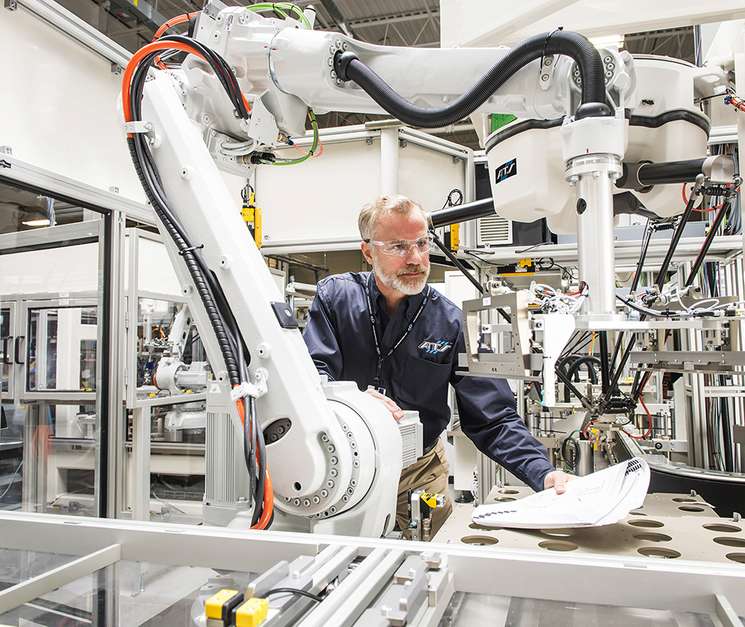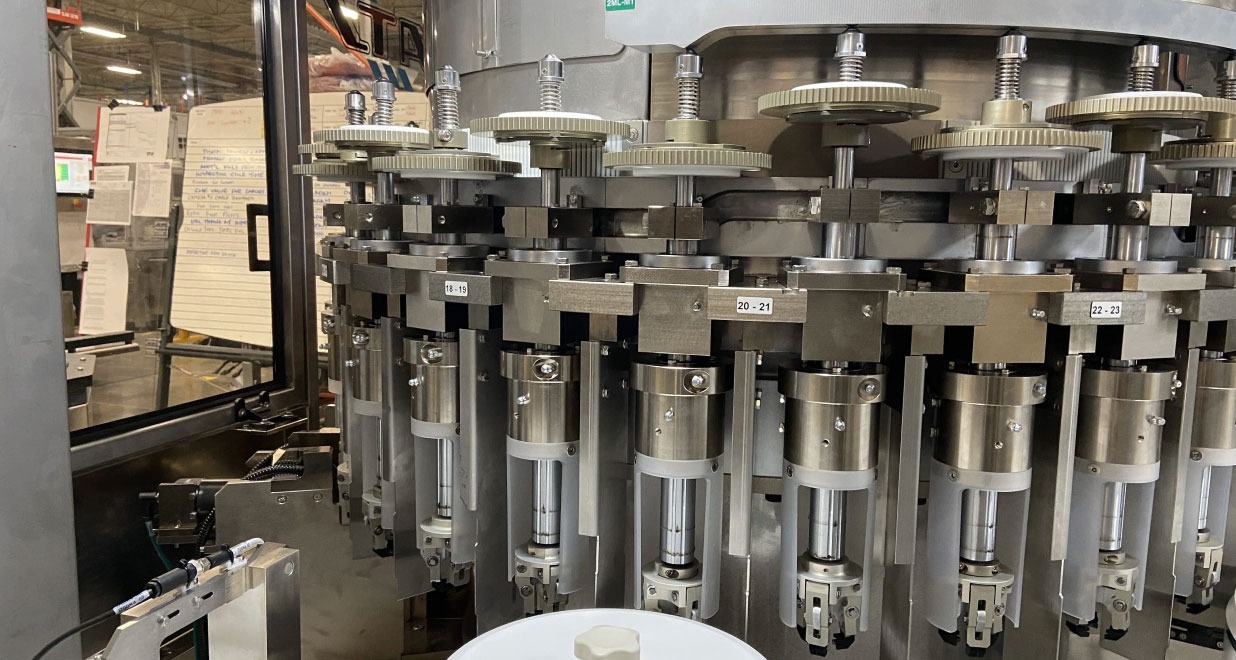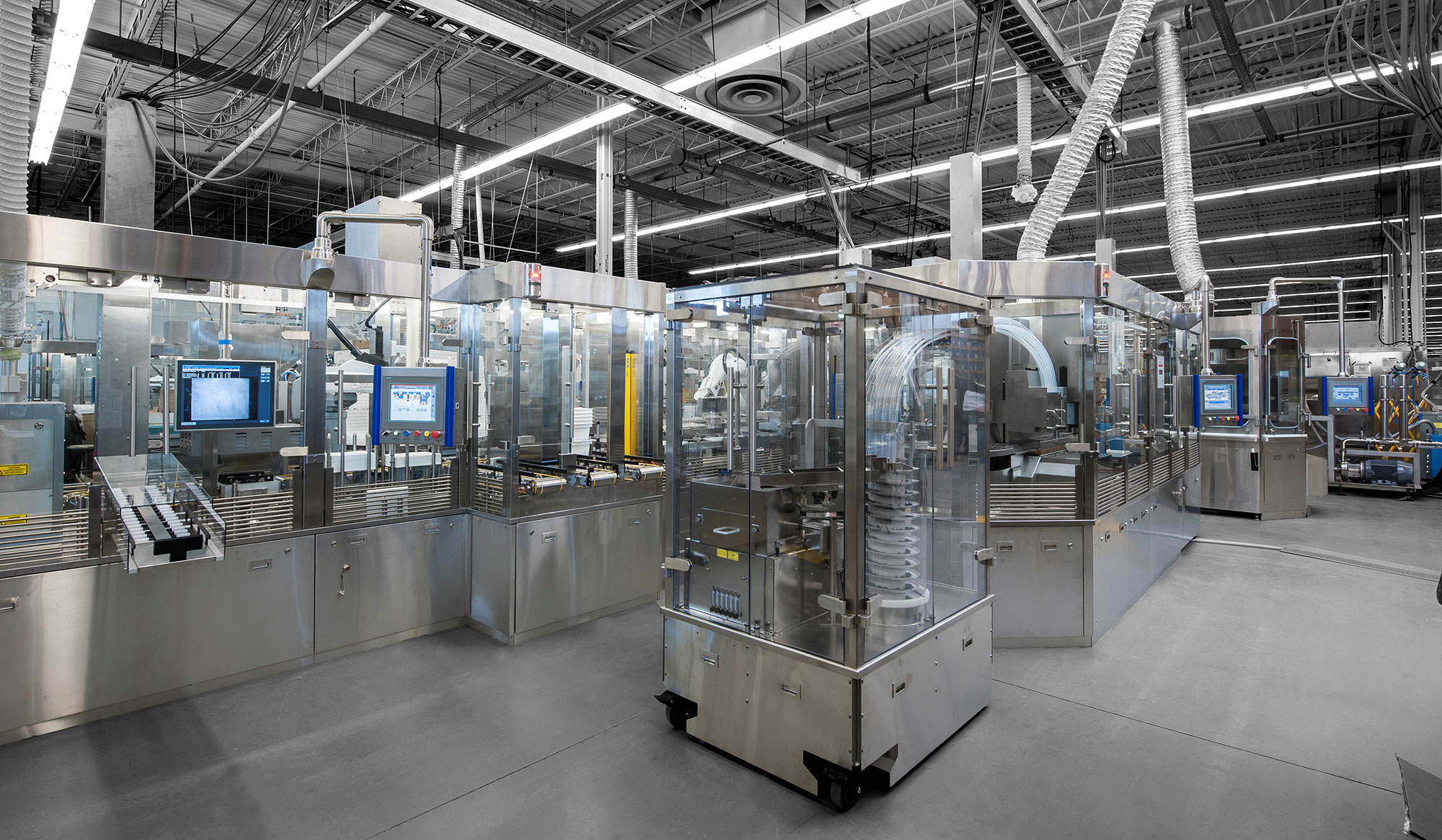Increased output, greater product consistency, and decreased costs are just some of the benefits of improved productivity. But knowing where to begin on your efficiency journey can be a challenge. That’s why we’ve come up with 5 Ways to Improve Productivity in Pharma Manufacturing, an easy-a-to-implement guide for achieving long-term success.
1 – Optimize and Automate
It’s no secret, pharmaceutical products must adhere to stringent standards. With so many Is to dot and Ts to cross, introducing automation to your production is a smart and easy way to ensure product consistency (strength, integrity, safety, purity, and quality), increase output, and reduce the chance for human error.
With public safety being a top priority, automation helps to ensure accuracy during manufacturing. For example, weighing, stirring, filling and various other processing steps can be completed by a machine, reducing potential contamination, product defects and calculation errors.
From a Human Resources standpoint, automation can also cut down on workplace-related injuries. Repetitive movement can take a toll on the human body. Robotics, on the other hand, are designed to complete repetitive tasks quickly over extended periods of time. This allows for higher output in shorter timeframes.
The opportunities for automation to enhance production truly are endless.

2 – Digitalize Data
Most of the regulatory observations year over year are related to poor documentation. Not only do digital applications reduce the likelihood of human errors, they also make data collection more efficient, allowing easy sharing across entire facilities and organizations.
Electronic data and analytics can play a huge role in quality control when it comes to the production floor. If there is an issue with a batch or a machine, digital applications can notify team members immediately, allowing them to quickly make informed real-time decisions on next steps.
Depending on how detailed the data collection is, automation also facilitates track and trace of each product manufactured, with the assistance of an electronic pedigree or e-pedigree. So, if you wanted to review product made before and/or after a date-stamped event like a machine fault or an operator intervention, you could. This would also apply to a customer complaint situation – you could pull up the data for their specific product and/or related products around that time period.
Going digital also means shorter turnaround times for post-batch reports and compliance documentation. No longer do you have to wait for the paper trail to make its way up the ranks. Instead, anyone with access to smart software can see the status of any operation, at any time, at their fingertips.
3 – Workflow Review
Efficiency isn’t always about purchasing additional automation; sometimes it’s about liberating capacity by eliminating waste. This can be accomplished by identifying and eradicating redundancies, as well as streamlining workflows.
Dedicating time to analyzing operations (processes, people, technology, etc.) may reveal pain points, opportunities for standardization, unnecessary steps, or non-value-adding activities. This could, in turn, improve efficiency, reduce costs, and allow for reallocation of resources to other production areas.

4 – Maintenance Matters
Aside from the fact that regular maintenance is Good Manufacturing Practice, maintaining equipment in good operating condition just makes good business sense. When equipment breaks down or underperforms, it slows the manufacturing process, wasting money and valuable production time. In cleaner environment scenarios, poorly maintained equipment could also compromise product integrity and efficacy. Implementing a regular maintenance schedule will go a long way to ensuring your equipment is running smoothly. In addition, replacing tired or worn-out parts before they cause major system failure can help eliminate waste from incomplete batches or processes.
No matter the age of your equipment (new or used), it’s important to have a dedicated team in place who knows how to troubleshoot to avoid system downtime and errors in production. Having knowledgeable staff will also reduce costs and additional wait times associated with calling outside repair technicians. This is also where digital systems can help, by notifying you of potential problems or scheduled maintenance before significant issues arise
5 – Training and Development
As technology evolves the way we work, the skillsets needed to complete tasks may also change. By offering training and development for existing team members, you help keep them engaged and feel like valued team members. In addition, up-leveling skills allow you to build on the talent and expertise already within your organization, allowing employees to work smarter, and therefore faster, leading to higher job satisfaction and retention rates. The regulatory agencies expect that your workforce is qualified and competent to execute the necessary production work. Training isn’t an option – it is a necessity.

About ATS Life Sciences Systems
For over 40 years, ATS Life Sciences Systems has worked with the world’s leading manufacturers for product launches, expansions, improvement initiatives, and solving complex manufacturing and process challenges. Whether you need a partner who can supply custom automation systems to anywhere in the world, or whether you need assistance meeting your contract manufacturing needs, ATS has the scale and resources to reduce costs and speed time to market. We look forward to demonstrating our thoroughly tested process in providing best-in-class automation solutions.
A conversation with a reputable supplier will help you understand the feasibility and benefits of automation before you make any decisions. Contact us at lifesciences@atsautomation.com to review your options.













 Contact Us
Contact Us  Subscribe
Subscribe  LinkedIn
LinkedIn  Youtube
Youtube